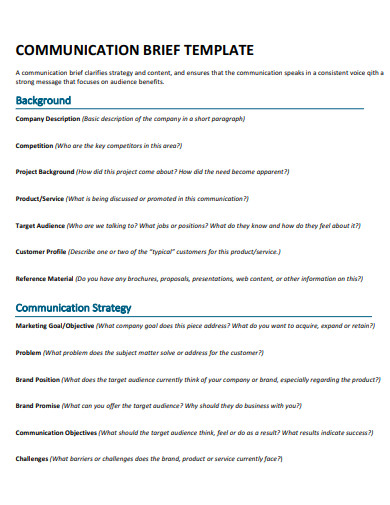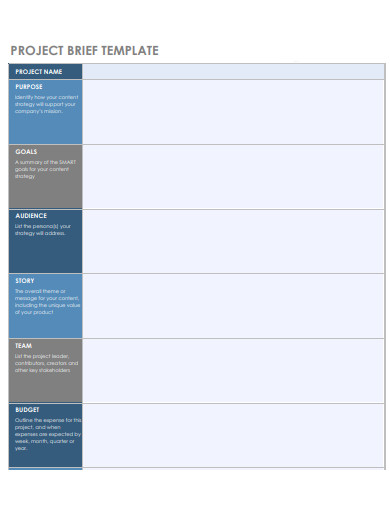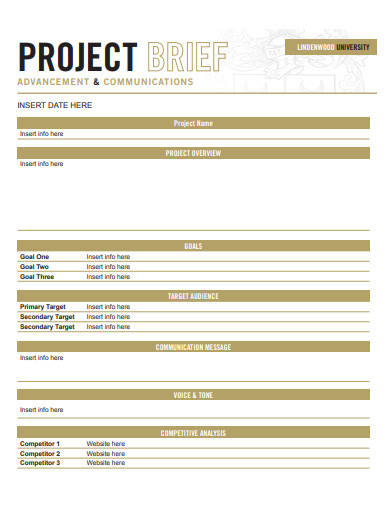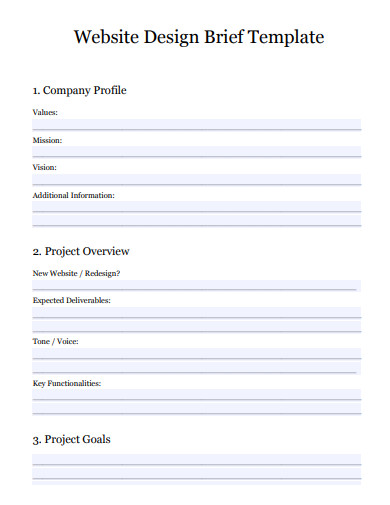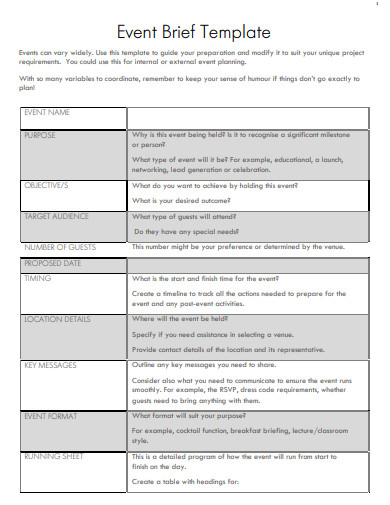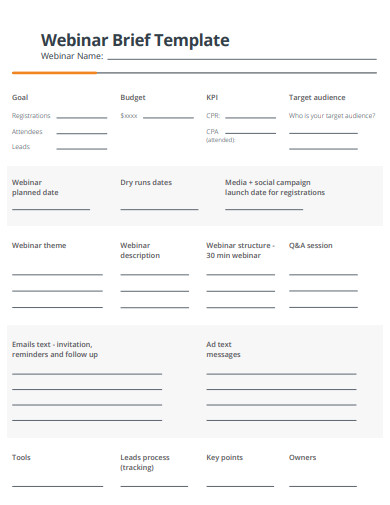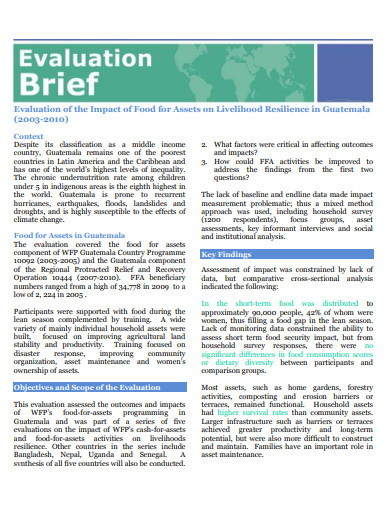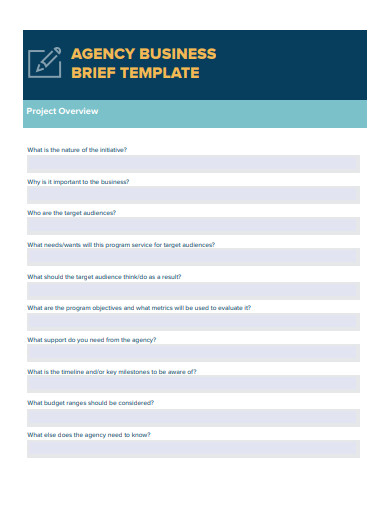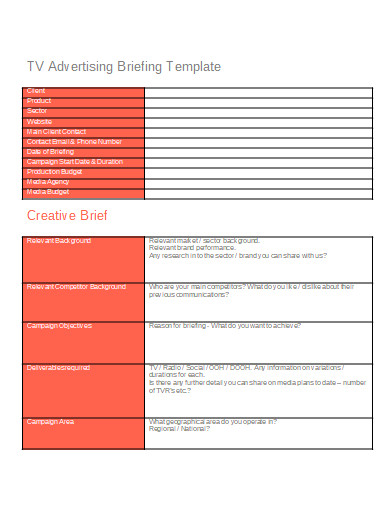The first step in any successful project, whether in business, entertainment, designing, or administrative fields, is drawing up a game plan in the form of briefs (sometimes known as creative briefs). A brief serves as a roadmap from the forming of the project idea up until its completion. It is a source of the project details for stakeholders involved in the project, guiding them to stay on track when they start working in case things get overwhelming. If your job is to manage projects, then creating a brief is one of the first things you need to prepare—and our brief templates can help you produce a professional and comprehensive version with ease.
10+ Brief Template Samples
1. Policy Brief Template
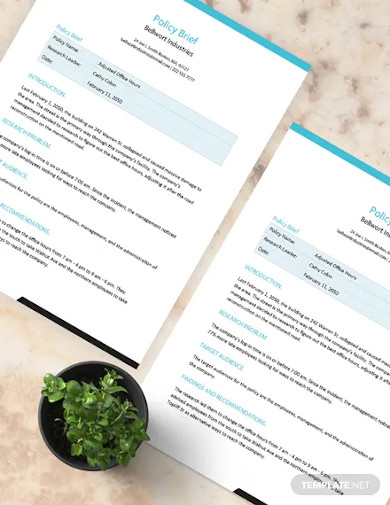
2. Campaign Brief Template
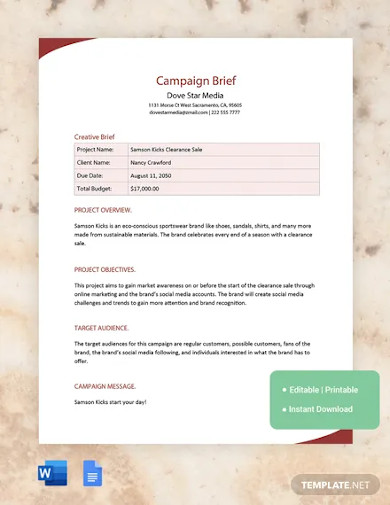
3. Communication Brief Template
4. Project Brief Template
5. Sample Project Brief Template
6. Website Design Brief Template
7. Event Brief Template
8. Webinar Brief Template
9. Evaluation Webinar Brief Template
10. Agency Business Brief Template
11. TV Advertising Brief Template
What is a Brief?
A brief is a short document that sums up marketing, advertising, or design project mission, goals, challenges, demographics, messaging, and other key details. It’s often created by a consultant or a creative project manager. The goal of a brief is to achieve stakeholder alignment on a project before it begins.
Details to Include in a Brief Template
1. Title and Description of the Project
The first thing to do is to give your brief a title and then provide a short description of the project that will explain the general idea of what will go down and the intention of doing the project.
2. Goals and Objectives
Specify the reason why you’re doing the project. Specify what work will you accomplish and what defines the success of the project. The answers to these intentions will be your goals and objectives. Make sure that your goals and objectives are realistic and measurable. You can refer to the SMART goal format to guide you on how to come up with goals and objectives.
3. Target Audience
Outline your target audience by gathering information and insights such as their demographics (age, gender, income level, marital status, education level, etc.) and their interests, wants, and needs. State if you’re trying to connect deeper with your current customers or attract new ones.
4. Message and Tone of the Project
It’s time to establish the message you will relay to your audience. You also need to think of how your message should impact the audience as well. What do you want them to do, feel, and think when they receive that message? Do you want to invoke a strong emotion or reaction or are you asking them to take an action? Make sure that your tone and voice should go well with your message, the project, and your brand.
5. Deliverables
Since the project needs to produce deliverables to achieve your goals and objectives, don’t forget to describe them in the brief as well. For example, if you’re creating a TV advertisement, your deliverable should be the actual ad. Don’t forget to also state any specific requirements for the deliverable such as their dimensions, number of versions, design elements, etc.
6. Stakeholders
Identify all the stakeholders who are vital to the success of the project. State each team member’s name and their role in the project.
7. Budget
Don’t forget to establish your budget for the project as well as this will help you manage the financial aspect of your project and decision making. Write down the actual numbers and costs of the project as well.
8. Timeline
Include a timeline for your project work from the moment it begins and the moment it will end to help keep your stakeholders on track and know how long the project work will take. Include a start date and end date, and other important dates for the project. Make sure that these dates are adjustable enough to be updated and change when the project is in progress.
9. Distribution Process
Define how you will communicate your message to your audience. Will it be through social media, email, blog posts, paid ads, etc? State your distribution strategies as well.
FAQs
How long should a brief be?
A brief should only consist of a single sheet of paper and should not be more than two pages.
Who writes creative briefs?
A creative brief can be written by a creative director, designer, project manager, strategist, planner, producer, or even an account executive. The person who has the most client and project knowledge is the best person to write the brief.
Remember to include vital information in your brief that will make it understandable to your readers. Make sure to apply any applicable style guides, tone of voice recommendations, and guidelines if needed to make your brief more specific. However, refrain from adding too many words and explaining your project in a roundabout way since you don’t have enough space to do it. Be direct and concise with the explanation. To help you get started making the brief, download our free sample templates above to use as your guide
Related Posts
-
FREE 37+ Debriefing Samples in MS Word | Google Docs | PDF
-
FREE 7+ Sample Project Brief Templates in PDF | MS Word
-
FREE 9+ Sample Creative Brief in PDF | MS Word
-
Briefing Note
-
How to Write a Best User Story: with Samples & Templates
-
FREE 20+ Small Estate Affidavit Samples & Templates in MS Word | Google Docs | PDF
-
FREE 42+Thesis Templates in PDF
-
FREE 6+ Password Templates Samples in PDF | MS Word
-
FREE 6+ PDCA Templates Samples in PDF
-
FREE 10+ SIPOC Template Samples in PDF
-
FREE 10+ Pipeline Template Samples in PDF | DOC
-
FREE 8+ OKR Template Samples in PDF
-
KPI Samples & Templates
-
FREE 32+ Sample Christmas Poster Templates in PSD | EPS | AI
-
FREE 11+ Sample Christmas Tag Templates in PDF | MS Word | PSD

